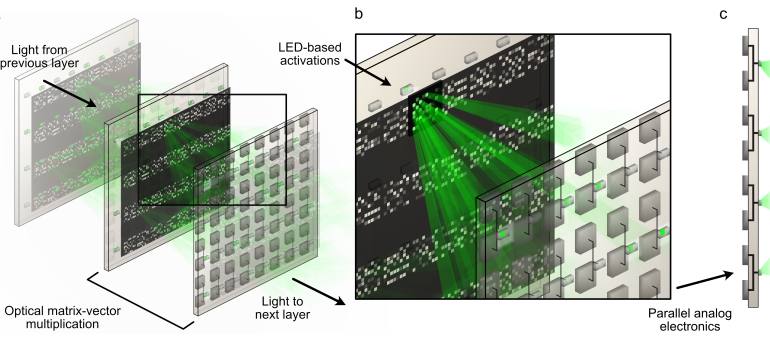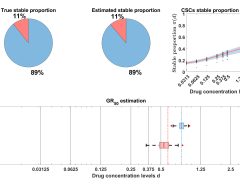Authors: Alexander Song, Sai Nikhilesh Murty Kottapalli, Rahul Goyal, Bernhard Schölkopf, Peer Fischer
Published on: February 03, 2024
Impact Score: 8.15
Arxiv code: Arxiv:2402.01988
Summary
- What is new: A multilayer optoelectronic computing framework that combines optical and optoelectronic layers for real-time, parallelized operations.
- Why this is important: Existing optical approaches to computing are slowed down by inefficient read-in and read-out data processes.
- What the research proposes: The introduced framework alternates between optical layers for matrix-vector multiplications and optoelectronic layers for rectified linear functions, minimizing read-in and read-out requirements.
- Results: Achieved a 92% recognition accuracy on the MNIST database and 86% classification accuracy on nonlinear spiral data.
Technical Details
Technological frameworks used: Multilayer optoelectronic
Models used: 3-layer network with two hidden layers
Data used: MNIST database, nonlinear spiral data
Potential Impact
Existing computing hardware companies, AI technology providers, and companies in need of high-speed, energy-efficient computing solutions for deep learning applications.
Want to implement this idea in a business?
We have generated a startup concept here: OptiNetX.



Leave a Reply